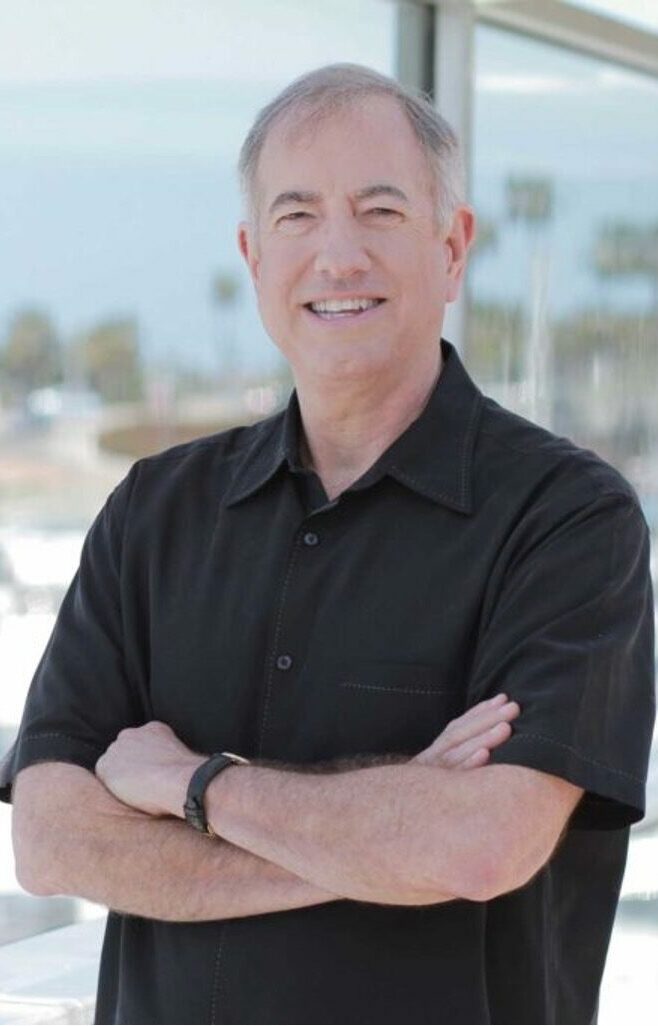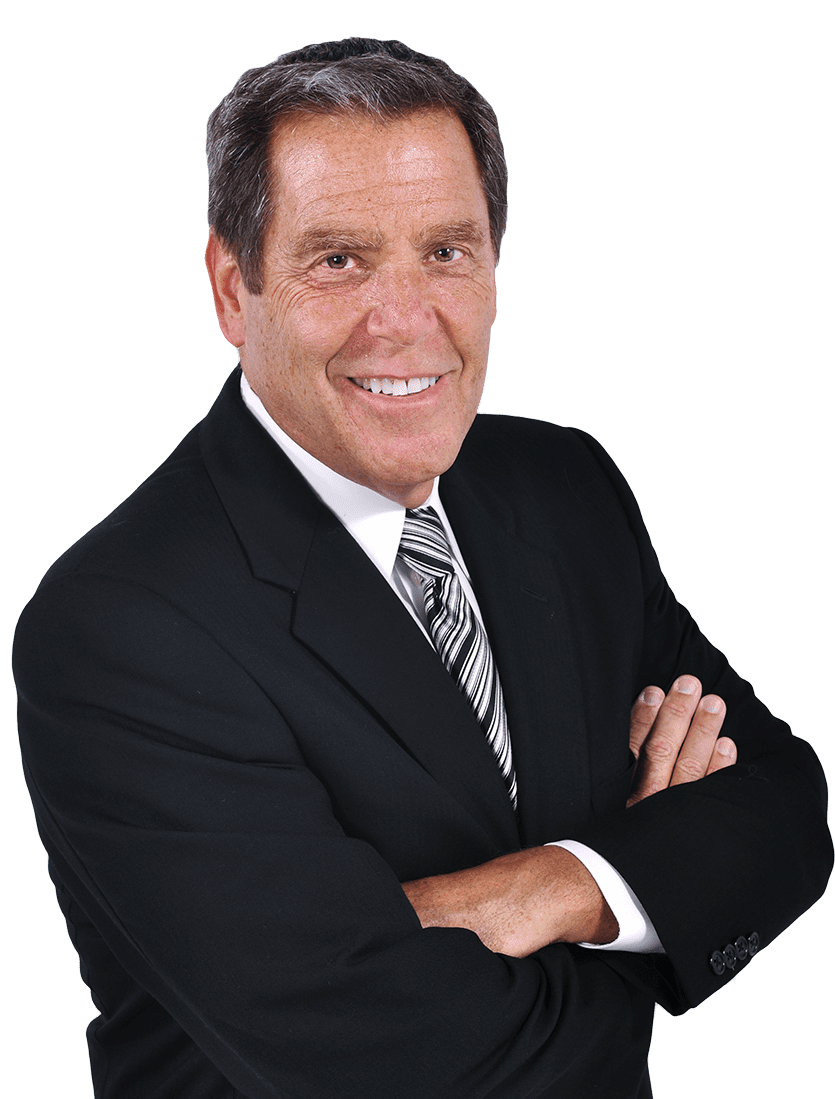Check Out Bill Cates’ NEW Top Advisor Podcast™
Interviews with Top Advisors for Top Advisors!
Top Advisor Podcast™
Ep. #60 – The Biggest Mistake Clients & Advisors Make in Life Expectancy Planning with Mark Pace, CLU, RHU, ChFC
According to actuaries, you and your clients are underestimating how long you are going to live.
Therefore, most people don’t plan properly, and most financial advisors aren’t even aware of this.
This interview with Marc Pace – Founder of the Vital Longevity Institute – has two parts:
- Part 1 – Why most people (advisors included) underestimate their life expectancy, and how you can use this new awareness to better serve your clients.
- Part 2 – How you can use this new knowledge to grow your business.
Want More Top Advisor Podcast Episodes? CLICK HERE!
–
Mark and Bill discuss:
- The history of the origins of retirement and what that means to you and your clients.
- A story of a nine-year-old running the wrong race serves as a metaphor for how most people have the wrong goals and expectations in life (and financial planning).
- The unique traits and habits of individuals who live to be 105 years or older.
- How the act of seeking and striving, as well as a sense of purpose, can extend the years of your life and the life of your years.
- The adjustments you’ll want to make in how you approach planning.
- The Vital Line program for financial planners, which includes coaching and consulting services to help them change their perception of aging.
- CASE STUDY: How belief-modifying techniques, like the “Possibilities Explosion” tool, significantly boosted a financial advisor’s seminar success.
- … And more!
Resources:
Connect With Bill Cates:
-
Show Transcript
Bill Cates – Welcome to the Top Advisor Podcast, brought to you by ProudMouth’s PodRocket Academy. I’m your host, Bill Cates, creator of the Cates Academy for Relationship Marketing. In each episode, I interview one of our industry’s top performers, getting them to pass on their secrets to success to you so that you can impact more lives and generate more income. Now, on to the show.
Welcome, welcome. Before we get going, I want to let you know about some free resources that I invite you to retrieve after you’ve listened to today’s interview. You’ll find checklists, guides, videos, other tools. Simply go to Referralcoach.com/resources. Now write this down. Unless you’re driving referralcoach.com/resources. And it’s also in the show notes. While you’re there, make sure you sign up for our free weekly tips. We’re always sharing best practices, and we’ll notify you of our newest podcast interviews as they go live. And while these are free to you, I think you’ll find them quite valuable.
On with today’s show. What if I were to tell you that you are probably going to live longer than you think you will?
Will that change your own financial and life planning? I suspect it would. And what about your clients? What if they’re going to live longer than they think? Which, by the way, they probably will. Might that impact how you help them plan?
Today’s show has two main purposes. Phase one of the show, I believe, will change how you think about your future, how long you’re likely to live, and how you live in those years, and how you plan for that living. And then phase two will show you how to use this information to enhance the client experiences that you provide, and how that will help you also grow your practice. I need to emphasize that these are not just platitudes, right? This is real world stuff. In fact, we have one case study that may just blow your mind with the results that are possible. My featured guest for today’s show is Mark Pace, CLU, RHU, ChFC, all the regular letters that we all have. First I’ll give you just a little background on Mark and then we’ll tap into his experience and wisdom.
Mark started in this business in 1977 as a financial planner. After about 13 years or so, he shifted his focus to fixing the mistakes that many in our industry make around life insurance and his business objective view. I hope I said that right objective. You still do that to this day, fixing those life insurance mistakes. And in that, as you might imagine, Mark got pretty adept at reading actuarial data and life expectancy charts. Sounds so fun. Uh, and saw some big mistakes that advisors and agents were making with their clients in their planning. So he founded the Vital Longevity Institute and created the vital line system for financial planners. Mark delivers presentations for groups of all sizes, including value added presentations for the clients of many financial advisors. I can pretty much guarantee that you’re going to find this interview interesting and helpful in how you plan for yourself and how you help your clients plan. So that’s quite a preamble. Mark Pace from Jackson, Mississippi. Welcome to the Top Advisor Podcast.
Mark Pace – Thanks, Bill. Glad to be here.
Bill – Great to have you. I just love this topic. I’m scared about the fact that I may live longer than I think I was going to. Uh, anyway, uh, one of the key findings that guides your work is the fact that most people make this mistake, this huge mistake, when estimating how long they will live. And you told me as much as 20 years. This includes financial advisors as well as their clients. Which brings me to a quick story I know you like to tell in your presentations about running the wrong race. Please share that story with our listeners.
Mark – Be happy to. Imagine this nine year old kid steps up to run his first race, and all he’s seen before he gets on the track is four hundreds, you know, four hundreds once around the track. And of course, there’s eight hundreds twice around miles, four times, you know, that type of thing. And he steps on the track, determined to win his first race.
And the gun goes off, he takes off, he leaves everybody in the dust, and he keeps pushing and pushing, and he’s still way ahead. But it’s starting to hurt because it’s his first race. And he finally crosses the finish line just one stride after that first lap ahead of the individual right behind him. He steps off, ecstatic because he’s won his first race, but he’s candidly in agony and then all of a sudden he hears, why did you quit? And he looks up and unbeknownst to this little nine year old. He’s in the wrong race. He’s running a 400 in his mind, and everybody else is running in 800 in actuality. And the reason I know that story so well, that was me, right? And the horror that I had, the experience of getting back on that track and walking around because it was that’s all I could do, was barely walk and finishing again to the utter amazement of a crowd that gave me a standing ovation. So I was. I mean, my face was so red.
I’m still embarrassed to tell that story to this day. But the reason I bring that up and I give that story quite often, the audiences. Is most people. And when I say most, I mean like probably 97% of the population is running the race of their life, just like that nine year old ran that race. They’ve got the wrong finish line in mind by a long distance, and therefore they’re making major areas in every important area of their life. Health, wealth, relationships, careers, all because they’ve got the wrong finish line.
Bill – Hmm. Wow. So that that’s a great prelude to our conversation. Um, Nate, you and I and everyone listening right now have seen some people who kind of flounder in retirement. Some people die soon after retiring. They seem to have lost their purpose. Perhaps. Uh, we’ve also seen others who retire and go on to lead long, meaningful lives. Certainly some of this can be attributable to their physical health one way or the other. Right? But there’s more to it than that, isn’t there? So I learned from you, Mark, that there was a time when a little over 100 years, in fact, when the concept of retiring or retirement didn’t even really exist anywhere in the world, we just we everyone just worked until they couldn’t.
Uh, so retirement really is a relatively new concept. I’d like you to give our listeners a little bit of this history lesson and, and then go. Then we’ll go into what you learned about people who who live active and fulfilling lives into their late 90s and beyond.
Mark – Right. Well. In 1890. The BisMarkk of Germany, uh, set up a concept because he was experiencing problems in society. And the major problem was that suddenly industrialization had hit the farmlands as well as the cities. And people had big families to try to mitigate the labor that you needed on farms. And so suddenly when they had machines, they didn’t need these young men, so they sent them into the cities. And the problem with the cities were they were already overpopulated and had, you know, everyone who was employable had a job. And so suddenly when you and we went through it just recently with Covid. Young men who are out of work do bad things. They. The term anarchist was actually invented at that time.
Mark – And so what he did is he got his people together and he said, do me a favor. Tell me, when do the workers die? Now, interestingly, if you were to Google life expectancy at that time period, you’d probably get 32. But unbeknownst to you, what you actually just googled was what’s known as the at birth life expectancy. Not the adult life expectancy. So he asked his actuaries and yes, they had them already. How long people were living and that meant adults. And surprisingly, the answer they gave him was 70. And so what he did was he said, let’s do this. Let’s invoke a rule that says that if you’re 70 or older, you can’t work. And we’ll pay you sort of a bribe, you know, to stay home. And that way, we pushed this segment of our society out of work, and we make room for these troublemakers, these young men. And that’s where. That’s why it was invented. That was when it was invented. That was how it happened.
And guess what happened within a week? Guess who was actually out on the streets, uh, trying to get some their message across the old men, because up until that point in time, they’d never heard of this concept. It didn’t exist. It didn’t make sense. And now we’re all used to it.
Bill – And you know, I just think about. All right. So I’m 72. If I was forced to retire, I wouldn’t have quite the same energy to to cause trouble.
Mark – Right, right. That’s the that’s the key. I mean.
Bill – Talk to my wife. I do cause trouble, don’t get me wrong, but, uh, probably a little different. Trouble?
Mark – Yeah. Completely different. Yeah. Young, young men are the troublemakers, and that’s. That’s why they did it. They made it. Had nothing to do with social. I mean, helping the old and all the the messages we get today. It was really just a bribe to take care of the the young.
Bill – Tell us more about this misunderstanding that people have around how long they are likely to live and which therefore adversely affects their planning.
Mark – Yeah, what happened with me is another story. I mean, basically I was working on a big case and it was a consulting case. And, uh, I asked the simple question, how long are these clients supposed to live now? This was 30 years ago. So in my mind, by the way, they were in their 50s. I’m going, well, 77, 80. That should be a good answer. And then I got with a prominent actuary and he goes, no, Mark. I mean, these are wealthy individuals, healthy, both of them. They don’t smoke. And you need to be planning on more like 95 or beyond. And I was like, whoa, wait, wait a minute. Hold it. 77, 95. That’s a big difference. And ever since then, of course, I found out he was right. And I’ve been asking the clients of my objective view firm as we’re working around their life insurance, how long they think they’re going to live. And of course, I’m seeing that proprietary data around life expectancy, and I know what the numbers look like.
And I find most people, including professionals in the industry, will give answers anywhere from 10 to 30 years too short. So we typically say 20 years too short. So a 65 year old may give. I just did a presentation recently where I asked anybody in the audience, 65, tell me how long you think you’re going to live. This gentleman was 66 and he said 76. And I said, well, are you unhealthy? He said, no, I’m in great shape. And I’m like, well, you know, the life expectancy is, which is when half of a common population is dead of healthy 65 year old men who don’t smoke, who are in an upper income status, if you will, is 95. And you’re running your life as though you’re supposed to be dead in just ten years. That’s a big misunderstanding. And by the way, that’s only half. What if you’re on that other half that lives longer? And so I see that most people are clearly massively misunderstanding the finish line.
Bill – And therefore are not planning properly. Advisers aren’t aware of this. Oh, yeah. So they’re not helping them plan properly, right. I remember in our conversation you you talked about, uh, super centenarians, uh, people who are 100 years older or years or older. And you made an interesting statement. You said that most super centenarians, if I’m saying that. Right, uh, won’t tell you that. They won’t even tell you that they’re over 100 years old. Talk about these these folks that that do live longer and and many of whom live in, in a pretty healthy, vital way, uh, into their later years.
Mark – Yeah. We, um, here at the Vital Longevity Institute study the super centenarians. Super centenarian, by the way, is someone who’s 105 or older.
Bill – Uh, all.
Mark – Right. And amazingly, 3% of the population then hits that number, which most people think it’s much smaller. The thing that creates the deception is the folks that are going to hit that marker, look and act the good 20 to 30 years younger than their age.
Mark – And therefore they learn. Often in their 50s and 60s, to start hedging their response to how old they are, because they find when they tell the truth. People immediately start treating them as though they’re old and decrepit, when in fact they’re not interesting.
Bill – You know, when when my daughter was younger, we used to go to the, you know, the carnivals and the various things like that where they’d have someone guess your age or your weight or whatever. And we always won the age one. She says, daddy, I want to I want a teddy bear. Go to go to the age guy, right? Right. Always walked away with a teddy bear. So I don’t know if I’m going to get to that. The super centenarian. But my grandmother lived to 104, so I do have some of those genes. Yeah. Uh, in me. Um, so what are these folks doing? Uh, what are some of the things? Um, uh, you know, their perspective, their physical activity, whatever, to to that that you notice some of the common denominators?
Mark – Yeah.
It’s it’s interesting the the Vital Longevity Institute’s all about changing people’s mindset around passing through time and space, because as we studied these super centenarians, there were about 25 major characteristics that they all exhibited. So I’ll just rattle off a few of them. The one that I found most interesting is that every one of them. I mean, not a single one didn’t pass this test. They are permanently, purposefully participating in life, which usually means whatever it is they were doing. They’re still doing it. So the concept. We talked about retirement earlier. The concept of retirement does not exist in their lives. At all. Because why would I quit? And by the way, they enjoy doing what they’re doing, so most of them are still doing it. Uh, the other thing we find is you mentioned they do lie about their age. In fact, I met a lady just recently in the Dallas airport. I fly a lot and travel and speak as you do. And the woman I shared with her what I did now, as we were speaking, I would have sworn the lady wasn’t over 70, but once she heard what I was doing, she says, let me tell you, son, I’m 93.
I mean, she was in impeccable shape. Elegant, looked great, spoke sharp, still running businesses all over the world, moving her own luggage around off the luggage rack at 93. She goes, I don’t usually tell people that. And I’m going, well, I can see. But she was a living example of what we’re talking about here. The other thing we find is that they they tend to be social animals somewhat, and they find relationships across all age spectrums, because one of the problems of most people is they they click with their, their friends and they’re the same age or close to. And then if you’re happened to be that successful person who can age well, you get lonely because they die in loneliness is real. I mean, we’re social animals and so they have naturally found the ability to acclimate across all ages so they don’t run out of friends over time. They’re very active. Uh, everything’s moderation with them. They may smoke. They may drink. Uh, that which is a surprise.
None of them are massively overweight. Um, all of them are, you know, more or less within normal weight classifications. Uh, nothing bothers them. In other words, you run them off. You cut them off in traffic and they’re likely to just wave at you. You know, you bring them food cold. Okay, fine. Wrong. Wine. Order. Okay. Uh, in other words, they they are. They’re able to go through life without getting upset.
Bill – Uh, you just eliminated half of my friends. Um. Talk to me about something we you mentioned earlier to me is about, um. He talked about neurologists and what makes people feel good. Do you remember that conversation? I do, yeah.
Mark – That’s one of the latest big discoveries among neuroscientists. You know, the feel good chemicals that, you know, let’s let’s go back to retirement. The basic concept of retirement is most people don’t like what they’re doing. Therefore they’re looking forward to this period in time when they can relax and enjoy life.
All right. What they’ve found, though, is that it is actually the seeking and striving. In fact, that is sort of the the layman’s terminology for that part of your brain, the seeking system that we use when we are aspiring, struggling, trying, getting up and falling, you know, you watch a young kid do it. I mean, they do it naturally. And what we find is it’s those chemicals that the brain secretes that actually cause us to feel good. So the aspiration to take a permanent vacation, if you will, from seeking and striving, is actually setting us up to not feel as good as we could if we continued to seek and strive.
Bill – Yeah, I heard a neurologist talk. Uh, he spoke after I gave a speech and talked about the stress that the kind of. It’s a little stressful, right? The street to to seek and strive. That’s actually good stress. It’s how our body and how our mind gets stronger as long as we take breaks from it.
Right? It can’t be constant. Um, uh, let’s let’s finish up this first phase of our discussion, um, with how the life expectancy charts you use in your presentations really do knock the socks off of everyone. Uh, you have a chart you show me, that demonstrates that people think how long they will live, what actually happens, and what is actually possible with the right mindset. Am I saying that right?
Mark – Yeah, somewhat. I mean, I basically ask an audience the following things. Bill. Okay. Before I even start talking. So I don’t pre swayed them. And in fact, why don’t I replay, um, a presentation I did in January up at the University of Washington at Tacoma. So I’m, I’m, I said write down how old you are and write down how old you think you’ll be the day you die. Very simple questions, right? Don’t think about it a lot. Just write them down. And then I get to a chart where I show them.
And I basically said, is there? And it’s a table of 65 year olds male, female and joint, because those are all different concepts. And I said, is there anybody in the audience, a couple ideally that are around 65? Gentleman raised his hand. He said, he’s 66. I said, fine, so let’s just play this along. You’re 66. That’s close enough to 65. When did you think you were going to die? This is the gentleman who said 76. Okay. And if I had that chart up on the screen right now, that would be the cumulative probability of death to a large population of healthy men at 76 of death is only 4%.
Bill – Wow. So he only had a 4% chance of actually dying.
Mark – And so who knows when he will die? Because that this is a chart for a big number of group. But I would I would be willing to bet and so would you. And by the way, so would he. Now once he saw this, that that was probably a pretty bad way to be running his life, right? I then immediately highlight the life expectancy number, which, by the way, was 94.5.
Mark – Which is when 50% of the population is dead. Now that means another 50% are still going to be here beyond 95. And then I say, where? Where is the 85% number? Where’s the 95% number? How big do you want the probability of of success to a plan for, say, a financial plan or in my case, planning for your life insurance? What kind of percentage do you want on it? And generally speaking, people want those numbers to be in the high 90s, like 95% of the time. They want to be right about their plan. And by the way, that would mean 95% number on the 65 year old male would probably be 104.
Bill – Wow. But he wasn’t planning on having organizing his assets to be able to number one, fund the life until 104. Yep. He’d be somewhere out of luck, somewhere along the way. And if he. And if he had children, then they’d be the burden. He’d be a burden to them. And if he didn’t have children, who knows what would happen to him, right?
Mark – Well, but the 104 is only half the story.
Bill – Uh oh.
Mark – Okay. Because we have two of them, right? They have the male and the female. And this is a common error that a lot of people make. They don’t realize. And I made it back when I was learning all this stuff 30 years ago to, um. Um, if we’re doing a financial plan for both of them. The joint life expectancy for the two of them is 98. Not 95, because you got the female mixed in and the 95% probability of death for both of them being gone is 106. So. In general, if you’ve got healthy clients, you need to be looking at 100 or beyond for many of these plans, and it’s something you can personalize with time. So that’s the kind of surprising result you get when you look at this information.
Bill – And it makes me think of the expression. Uh, hope for the best. Plan for the worst. In this case, hope for the best. Plan for the best. Uh, I suppose right. As long as.
Right. The best is you’re healthy in those years, too. By the way, I want to mention to, uh, everyone listening to also, um, after we’re done here, you’re done here. Listen to episode 48 with Steve Grisham. Uh, it’s all around longevity planning. So he brings his perspective, but it’s not quite as eye popping as what we’re doing here in terms of the actuarial tables. But so 48, I think you also find helpful in this this whole idea of longevity planning, I think, is misunderstood by a lot of financial professionals, unfortunately. Um, so in in phase one, we learned that everyone underestimates how long they think they’ll live and how that can impact their life planning and financial planning. Uh, in about 90s, we’re going to move on to phase two of this interview with Mark Pace to discuss how financial professionals like you listening can use this information to enhance the experience and value you bring to your clients, and how that in turn, can lead to the growth of your business.
Mark has a couple of specific case studies that will bring all this to life. But first, let’s take a brief pause to listen to a word from our sponsor, PodRocket Influence Academy, brought to you by ProudMouth. First, they make this podcast possible, and their core business is helping financial advisors accelerate their influence through marketing activities like podcasting.
SPONSOR MESSAGE – This podcast is sponsored by ProudMouth, The Influence Accelerators. If you’re like our clients, you want to spend more time educating people and less time selling. That’s why we turn Main Street experts like you into trusted mainstream authorities. We help you amplify your influence over a growing audience of magnetically attracted fans who will chase you down instead. Visit proudmouth.com to learn more.
Bill – I’d be remiss if I didn’t at least mention our newest, even better than before Academy for Relationship Marketing. If you want to learn almost all of the strategies and methods I’ve taught the thousands of financial professionals over the years, our academy is the place to go. So do yourself a favor and visit the Cates academy.com.
That’s the CatesAcademy.com. You can go through everything on your own or if you’re interested, we could do some coaching along the way. And if you decide to join the academy, please use the coupon code TCA 200 TCA. The Cates Academy TCA 200 and you’ll save $200 off the already affordable tuition. Now back to my conversation with my featured guest, Mark pace, founder of the Vital Longevity Institute. Mark, as we start to talk about how our listeners can use this information to improve their businesses. Tell us how you work with financial advisors and how our listeners can learn a little more about what you do and how to get in touch with you.
Mark – Sounds good. Uh, we basically have two programs. Uh, one is a coaching program that changes people’s perception of where they are in time and space, and gives them the mindset tools to begin to counter what society will tell them around aging. From that, we actually designed a series of lighter versions of the tools our coaches use with our clients, and most of our early adopter clients were financial planner, financial advisors, family office type participants.
And we found that if they took these same. Belief modifying tools, which is what they are transformative experiences, and change the context and started using them with their better clients, which plays right into what you do. Bill. They would suddenly see a dramatic change in the experience level. In other words, the desire to help them, help others, help people they knew and care about. And so referrals and the growth of their business started to explode. So that’s the vital line program for planners. So in other words, it’s more of a business development consulting, uh, role that we play on that side. So many of our top advisors are both in the coaching program for themselves personally, oftentimes their wives, too, or sometimes their kids. And they are also in the consulting side where we’re helping them grow their business, using, if you will, shorter versions of those same coaching tools with their very best clients. And by the way, you can find that at vitallifelong.com vital lifelong.com. There’s plenty of ways to access us through the website.
Bill – We’ll put that in the show notes as well. Mark how did how did all this come about? How did you get into this world of helping advisors with this and and why does it work so well?
Mark – Yeah, that’s a great question because what we found was as we my my belief was at the beginning, I went naively that if I just started showing people how long, much longer they were supposed to live, they would start changing the way they lived their life. And that’s not what happened. They loved my presentations, but nothing was happening. To dramatically change the way they were living their life. In other words, how they were running their daily race. And so we went back to the drawing board and we started saying, what’s wrong? Why? What’s causing this? And what we discovered is we’re social animals. Humans are. I mean, you know, we acclimate to our environment automatically. We, um, automatically. The technical term is in train and synchronize with others the way others behave.
Mark – Um, in other words, it’s what gives us the ability to build great societies. But if the cultural script is wrong. Then we’re in training into the wrong script. And what we found was that two things. The cultural script was off by about 250 years. In other words, the way we’re supposed to behave at various ages was appropriate at the time of the American Revolution. Okay.
Bill – But we’re still doing that now is we’re just.
Mark – We’re still doing that now. And the other thing we found, which was a real shock to us, was as we began to give people belief modifying behavior techniques, which is what we had to develop. And it does why we ended up with a coaching program. The very people who are close to them. Are the ones who will tend to fight them the most as they make these dramatic changes, because they don’t want to see them rock the boat, because they are now behaving and acting in a way that is not appropriate for the script. And so in our coaching program, we now not only have to help people change.
And by the way, we’ve labeled that script the culturally conforming conveyor belt. It’s too short, and it causes us to limit how good we can be in every area of our life. And as you begin to change it. Particularly if those changes are dramatic. And oftentimes they are. The people closest to you. Friends, family, business associates are the very ones who will often try to pull you back and keep you from changing. So our coaching program not only helps them change, but it helps them learn how to defend themselves. So that was the beginning. From there, we ended up finding that those same tools. If you made the context a little different and a little shorter. Cremated dramatic effects on the clients. And Bill, I know you wanted me to talk about a particular situation. Would now be a good time or do you want to.
Bill – Yeah, yeah. It gets get specific examples results that that’s what everyone loves to hear.
Mark – Yeah, yeah. So one of the very first tools we created is something called the possibilities Explosion.
It changes the clients in our coaching program, perception of how long they can live and what they can do with the rest of their life. And one of our younger advisors, um, was using the tool without us realizing it. And putting it at the front of his seminar selling system. And it was a pre-retirement seminar selling system. So he was getting about a 50% in office participation rate off of the seminar, which, by the way, is very good. He was also predominantly AUM based financial planning type, and he was getting a $2.5 million new AUM for every webinar and not webinar seminar, which is very good, you know, 25,000 of future recurring revenue. He added this 15 minute experience at the beginning of the workshop. And suddenly, as in office, participation rate went to 95% and stayed there. Which is phenomenal. Wow.
Bill – Yeah, but.
His AUM jumped from 2.5 million to 7.5 million. Her workshop. So he was spending 10,000 to get the workshop done, and he was making 75,000 recurring.
Mark – So as a businessman, would you spend ten to get 75,000? Forever.
Bill – Yeah. Yeah. Yeah.
Especially if I was going to live to 104 or like you.
Mark – Yeah. Yeah.
And that’s just one of many. There’ve been quite a number of those types of experiences. And it all leads back to what you’re doing, Bill, is if you begin to get clear about who you really want and get clear about what you’re doing for them and give them these. Experiences that differentiate your firm. It’s amazing how fast they’ll start referring business.
Bill – So give us just a little bit more. Um, so what would this guy that you just talked about, what would he talk about in that first 15 minutes? What what what what did he add to?
Mark – Well, it’s a specific exercise that we have developed and it’s it basically asked him how they are when they think they’re going to die. What is their life look like in every major area? What would it look like if they could start to make some changes? What are some of the things? In other words, it’s a, it’s a, it’s one.
We call it an emotionally transformative experience that creates such an. Aha. That they immediately want to hear more.
Bill – Gotcha. So it’s a little vision creating. Yeah, right. What’s possible but backed up by some actual actuarial data. Yeah. Right. So it’s not just the pie in the sky thing. Uh, a little science behind it, which probably makes a big difference, right?
Mark – Oh, yeah.
Bill – It hits both sides of the brains, I guess a little bit.
Mark – It does. In fact, that’s what we found. Which again, plays into your business model is that we find most advisors and we deal with many very successful ones. Spend most of their learning around the service side of their business. In other words, we call that the math around money. It’s how do I do the math around money better? They think by changing the math around money deliverables, the business will improve. Well, it does, but at a certain point, spend time on the experience side of the business and keep delivering this excellent service.
And that’s when the big payoffs start to occur. So our entire program on the consulting side is built around enhancing the experience side of the business. We call that the more than math around money part of your business. So keep doing the math around money. But add the more than math around money and it explodes in growth.
Bill – You know, that jives a little bit with what I talk about. It’s engaged clients who give referrals. And what do I mean by that? Well, they’re engaged with your value. And that would be kind of your math around the money. Uh, there’s more to it than that than value. But they’re engaged with that, and they’re also engaged with you personally. Um, because the relationship has become more than just the math around money. Right, right. And that’s what you’re. And that’s what makes you one highly referable. And, uh, that’s when people start to talk about you because.
Mark – Yeah. And what we find is. Most of them want to do it by just being a nice person, and most of them already are.
So why not give them pre-programmed experiences that are easy to add to what they’re already doing without changing up their basic service model that we know will deliver these exceptional experiences?
Bill – Beautiful.
Love it. My featured guest on today’s show is Mark pace. Mark, thank you for sharing such practical, valuable, interesting, uh, revealing content on Top Advisor Podcast. Thank you.
Mark – Thank you, Bill, for having me. And thank you for all you do for the industry.
Bill – Yeah. And I guess I should say, uh, to borrow from Star Trek, uh, Star Trek, Star Trek, live long and prosper. Uh, the the you, the listener of this podcast may ask you a small favor. If you like this episode or like the podcast in general, please leave a five star review on the platform you’re listening to the show. Not all platforms have a place for reviews, but if it does, I’d be grateful. Thank you. And if you haven’t already, there are two places you want to visit referral coach.com/resources.
That’s where you’re going to get a bunch of guide scripts videos all free and valuable. And then also check out the Cates Academy, the Cates academy.com for, uh, the most comprehensive way that you can tap into the value that we’ve been providing for so many years. This is Bill Cates reminding you that ideas do not make you more successful. Only acting on those ideas will bring you the success you desire. Thanks for stopping by.
Thank you for listening to the Top Advisor Podcast, brought to you by ProudMouth’s PodRocket Academy. I encourage you to visit my website, ReferralCoach.Com for links to my books, online courses, and to register for the Cates Academy.
About Our Guest

As founder of The Vital Longevity Institute and creator of the Vitalign System and the Complete Wealth Planning System, Mark Pace has exposed once and for all the deeply held yet false and ruinous beliefs holding everyone back. Spoiler alert: these false beliefs are the cause of practically every type of suffering in our society.
Mark has been delivering quantum change dynamics that, for the first time in history, counteract the cultural forces preventing people from living their perfect life, the one they deserve, the one they were meant for. He teaches a simple, powerful, proven, and immediately effective daily process for making rapid, permanent, positive changes. And, he inspires people to reset their life clocks so that their future will always be bigger, better, and brighter than their past… no matter how long they live!
Mark’s work is based on 40-plus years of entrepreneurial success, 20 years of research, and over three years of field testing.
Connect With Mark Pace:
![]()
Never Miss an Episode!
Click below to subscribe on your favorite podcasting platform.
P.S. Don’t keep Top Advisor Podcast a secret … share with a friend or colleague!
Click Here to Subscribe Tell a Friend

About Your Host
Bill Cates, CSP, CPAE, works with established financial advisors to speed up their growth without increasing their marketing budget. Advisors tap into Bill’s proven process to multiply their best clients through introductions from advocates and Centers of Influence (such as CPAs and attorneys), communicate their value proposition more effectively, and create a reputation in a profitable target market. Bill helps advisors move from push prospecting to magnetic marketing – to attract more Right Fit Clients™.
Bill is the author of four best-selling books, Get More Referrals Now, Don’t Keep Me a Secret, Beyond Referrals, and Radical Relevance. Bill is a highly sought-after international speaker and coach, as well as the founder of The Cates Academy for Relationship Marketing™.
Do you know someone Bill should interview (including yourself)?
Do you have a topic you’d like to see covered?
Contact Bill Cates directly: BillCates@ReferralCoach.com








